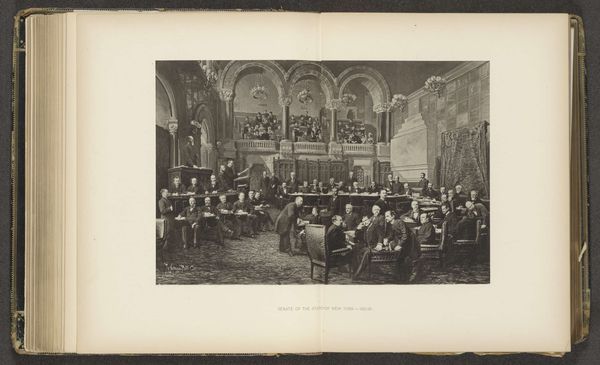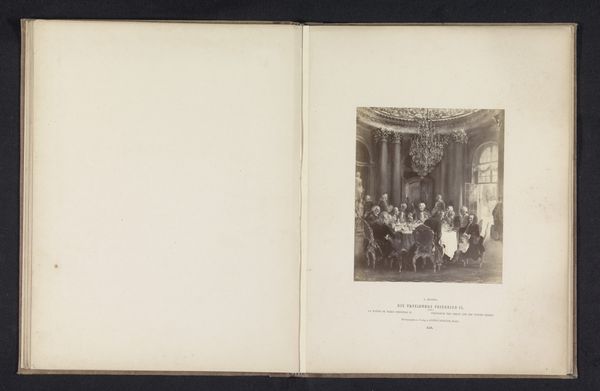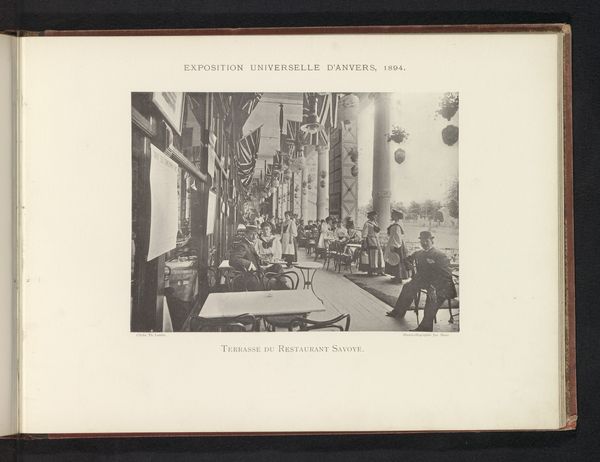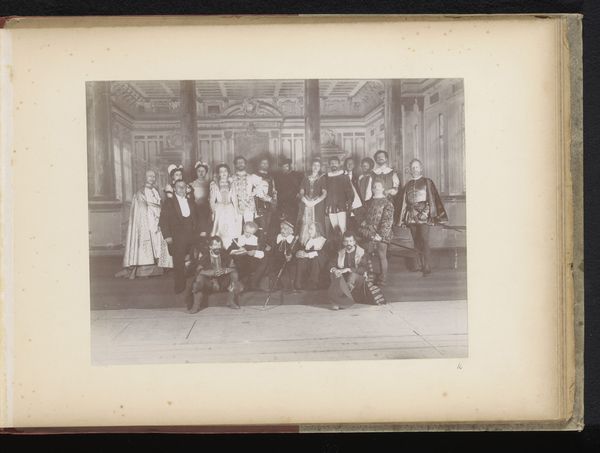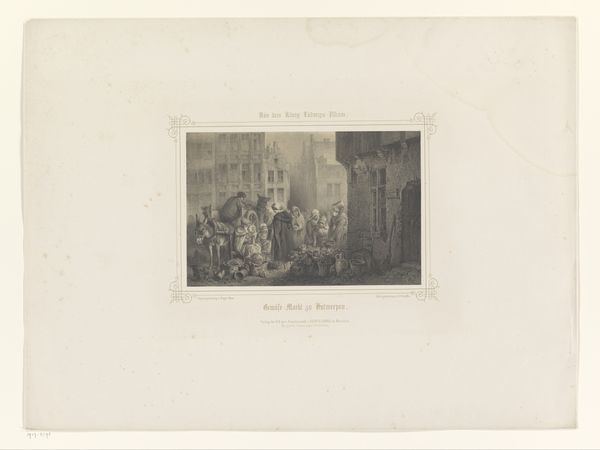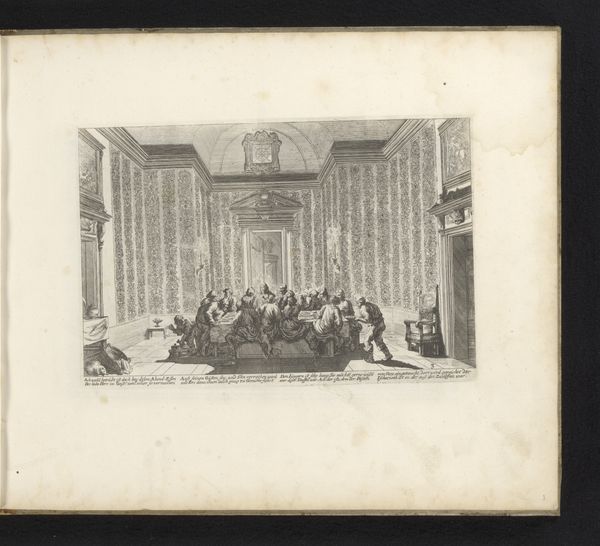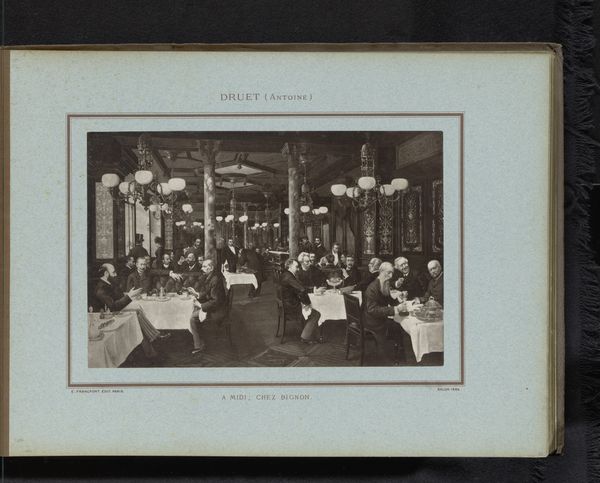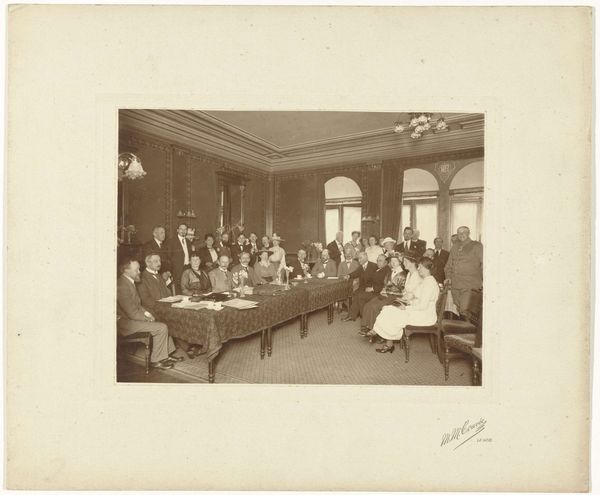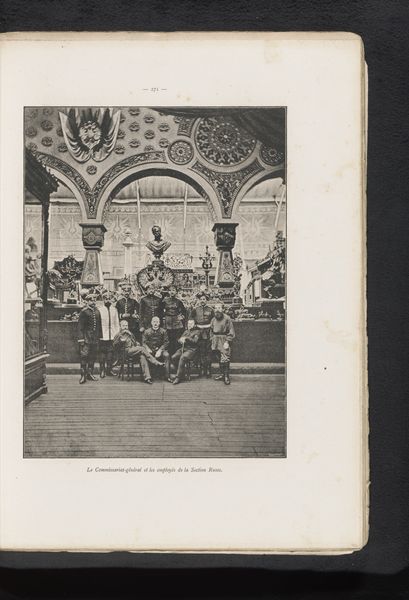
print, photography, gelatin-silver-print
#
portrait
# print
#
photography
#
gelatin-silver-print
#
genre-painting
#
academic-art
Dimensions: height 160 mm, width 215 mm
Copyright: Rijks Museum: Open Domain
Editor: Here we have Edward Hart's "Cadet's Mess-Room," a gelatin-silver print from before 1890. It strikes me as quite formal and regimented, even in a seemingly casual setting. What stands out to you when you look at this? Curator: What I see is an exercise in the division of labor and material control. Consider the setting – a mess hall – a space explicitly designed for the replenishment of energy, fueling the cadets as bodies in service of a larger structure. How do you think the print medium impacts how we see this space? Editor: Well, photography in itself feels very mechanical, which emphasizes the uniformity of the scene. The black and white adds to that sense of austerity, focusing on form over warmth. Curator: Exactly. The very act of capturing this scene with a camera implicates the photographer in a system of documentation and control. It’s about more than just recording a space; it’s about framing labor, power structures, and the materials that enable them. How might this image speak to class structures present at the time? Editor: It is interesting. On one side there are what appear to be serving staff wearing different clothes, compared to the seemingly all male, uniformed cadets at the tables. There's such a strong visual and social separation. Curator: Precisely. Consider how materials here become signifiers of class and status. Uniformity in the cadets' attire signals belonging and subordination to authority, while the starkness of the photograph, almost clinical, reveals the labor involved to maintain such visual order. I wonder about what is outside of the image too; what went into creating and distributing this print and to what audience? Editor: I hadn't really considered the photo as part of the cadets' broader training but it definitely plays into presenting a certain kind of public image of military order and sophistication. Thanks for providing this fresh, production-oriented perspective! Curator: It encourages us to interrogate whose stories get told and through what material means. Seeing the making of art expands its meaning.
Comments
No comments
Be the first to comment and join the conversation on the ultimate creative platform.
